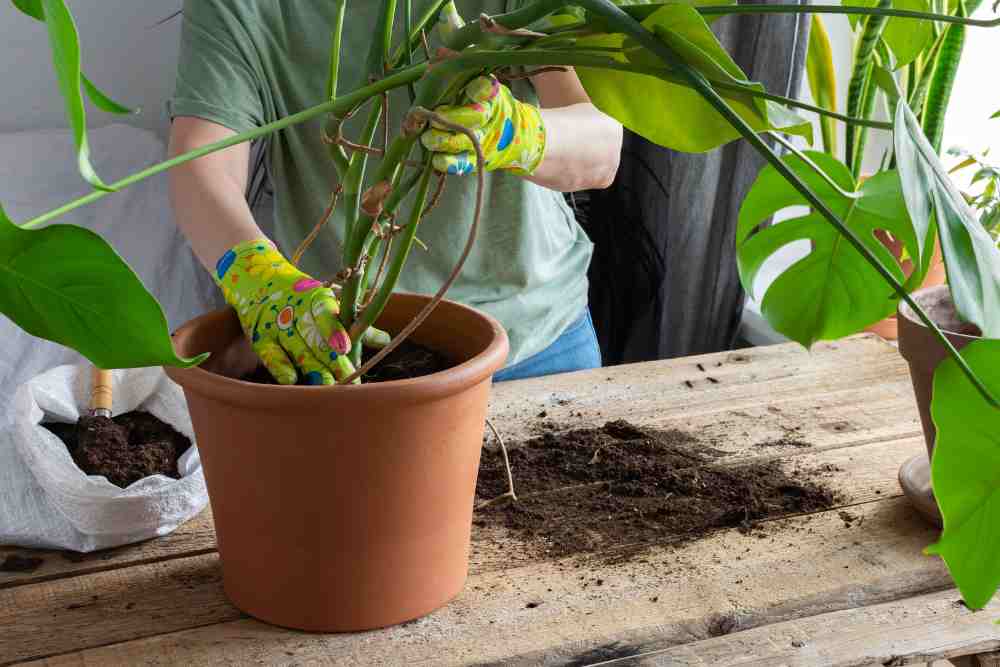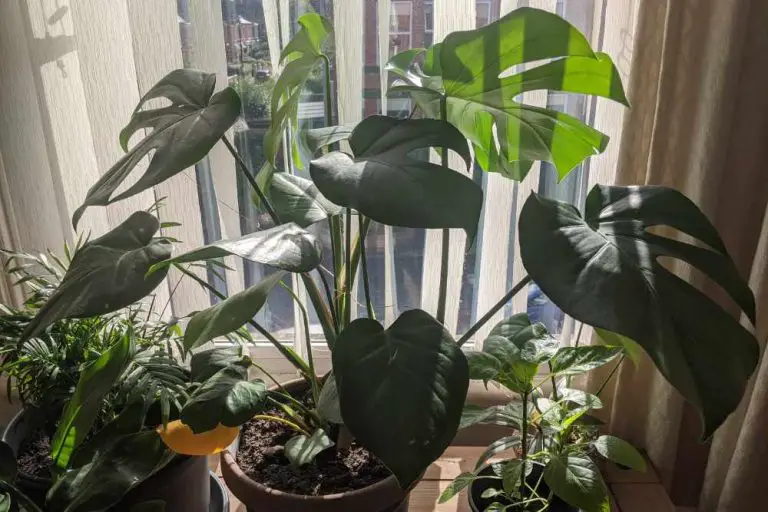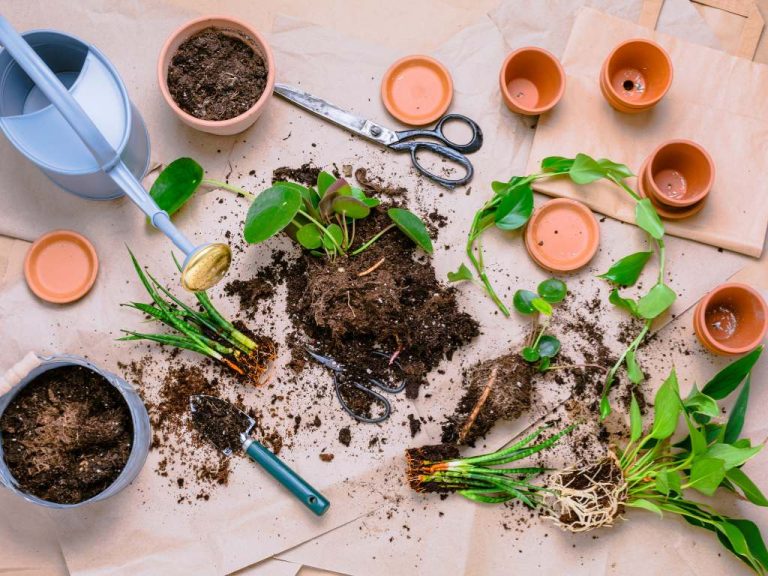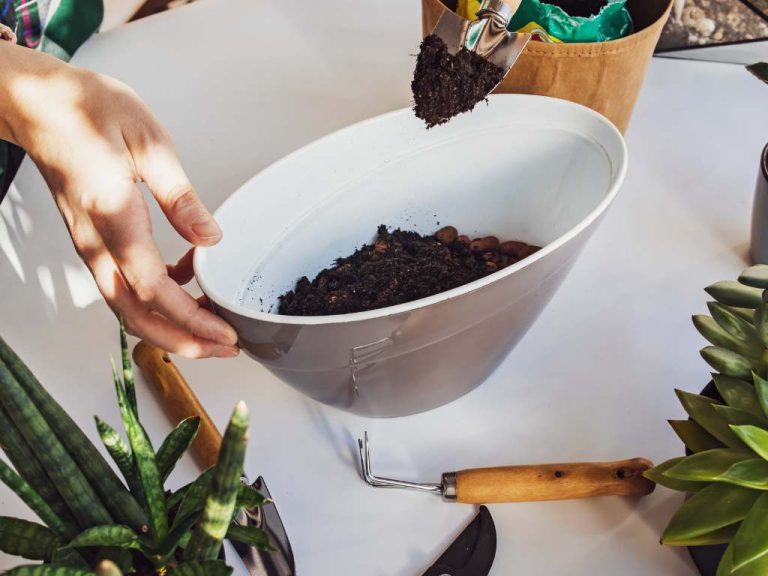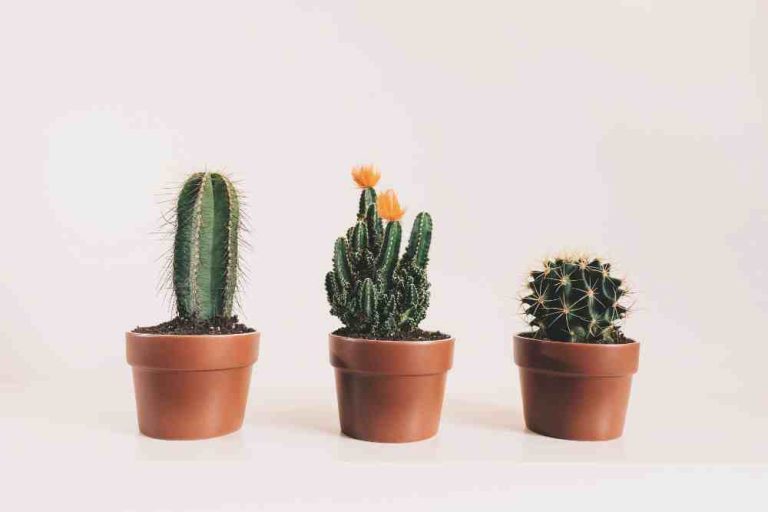Best Soil Mixture for Monstera: Unlocking the Secrets
A Swiss cheese plant or Monstera is a wonderful addition to any house. They will grow and give you years of fun if you take the time to care for them. To make sure your plant survives, there are a few things you need to do.
Monstera plants provide something for everyone, with varieties ranging from the large and holey Monstera delicosa to the silvery and delicate Monstera siltepecana. The first step is to find the proper soil for your plants. Whatever variety of Monstera you have, you need to provide it with the right soil mix to ensure its success. Despite the variety of plants in this genus, they all require the same potting mixtures.
Join us as we assist you in selecting the best soil mixture for Monstera plants. Monstera plants grow best in nutrient-rich, moisture-retentive, well-aerated soil mixtures that are just slightly acidic. For Monsteras, many people prefer to use an aroid soil blend. A few basic materials can be used to create your own homemade Monstera potting mix; however, both aroid and acidic soil mixes are readily available for purchase.
The Best Soil For Your Monstera
When growing any plant, soil quality is one of the most crucial factors. Your Monstera plant will grow best in good, robust, well-drained soil that supplies the correct quantity of nutrients and moisture.
To guarantee that your monstera plants grow into healthy, happy plants, you should ensure the soil you’re growing in has the optimal nutritional composition. Monster plants can also be grown in water.
The proper soil for your climate should be selected as well. It could be challenging to locate quality clay content in some places. For monstera plants, maintaining moist soil is also crucial. Acidic soil is essential to them as well. It favors a pH of 5.0 to 6.8.
Factors to consider before choosing the best Monstera soil.
1. Ingredients
Vermiculite, perlite, coconut coir, pine needles, and sphagnum peat moss are frequently found in mixtures in potting soil for monstera plants. When growing Monsteras, each of these materials has certain advantages.
- Perlite – Perlite, which resembles Styrofoam pellets, is created when the volcanic rock is burned to extremely high temperatures. It filters oxygen while absorbing and retaining moisture quickly.
- Vermiculite – Its texture is similar to perlite, and it hydrates the growing medium to prevent compaction. Vermiculite deposits are formed by mining silica deposits.
- Coconut Coir – The outer layer of the coconut is made up of a fibrous layer known as coco coir that surrounds the hard coconut shell. It does not compact when wet, in addition to having moisture-retention abilities. Creating a coco-coir growing medium that offers the best possible growing conditions requires no extra materials.
- Pine Bark Chips – Pine bark chips are tiny pieces of coniferous trees such as firs, spruces, and pines. This bark keeps its shape over time because of its high lignin content. Because of this, it is effective in resisting compaction and generating air gaps.
- Sphagnum peat moss – Sphagnum peat moss is made up of microscopic particles that have a gritty texture. This results in a high capacity for water and nutrients and good aeration.
- Activated Charcoal – Activated charcoal is very porous and has undergone chemical activation, high-temperature processing, or gas processing. It improves your soil’s capacity for removing pollutants, deters insects, avoids mold growth, and takes up extra water (preventing root damage).
- Worm Casting – Worm Casting is a type of organic fertilizer made from worms. Already, earthworms are beneficial to your soil. Your soil becomes richer and more nutrient-dense with worm casting, giving your plant everything it needs to thrive.
- Bark Chips From An Orchid –Tree bark are shredded or chipped to make bark chips. It adds additional nutrients to the soil in order to support plant growth. Because of its coarse texture, a substrate mix can benefit significantly from aeration, resistance to compaction, and drainage.
2. Aeration
Houseplants need aeration just as much as gardens and lawns do. In the soil, it means supplying air. Since Monstera deliciosa dislikes being submerged in water, aeration is crucial when growing these plants. A potted plant loses oxygen when it is flooded with water. Additionally, when oxygen is deficient, Monstera leaves may turn yellow and fall off.
Vermiculite, perlite, and coco coir are examples of components that can assist the potting mix in this situation by keeping it high, light, and aerated. These components allow water to quickly drain out of the mixture, keeping the soil from becoming soggy. Additionally, planting Monsteras in a container with drainage holes is essential. Be aware that even well-draining potting soil mixtures are useless without drain holes.
To make the soil around the plant looser, use a trowel or garden fork. While doing this, take care not to harm the roots. Add some organic material, like compost or peat moss. This will assist in reducing soil weight and enhancing drainage. Your soil ought to be loose, not heavy, and difficult to compact. This also permits the roots to expand without being restricted by the soil’s hardness.
3. Moisture Retention
It may appear weird that the optimum soil for Monsteras should be able to retain moisture while still being well-aerated. However, there is no real opposition between these two factors. Retention of moisture does not equal sogginess, so keep that in mind. It implies that even after the water has been drained away, the components of the growing media will still be moist.
Perlite is the material of choice for aeration and moisture absorption. As the potting soil dries out, perlite gradually releases the water these tiny beads have absorbed and held onto. Perlite also makes spaces in the soil, allowing more moisture to escape away.
4. pH Levels
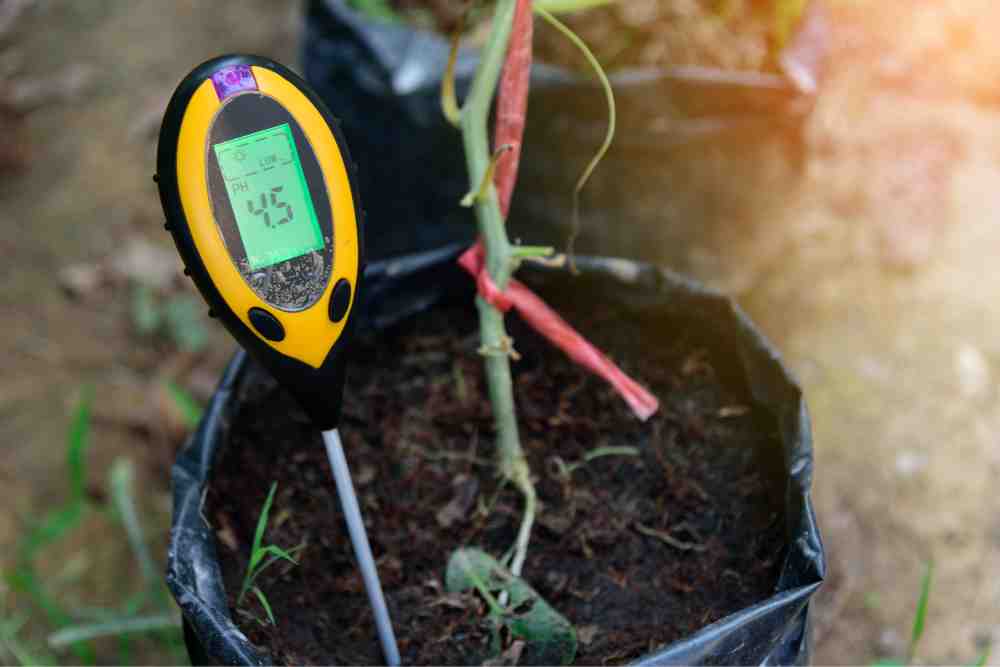
Monsteras prefer somewhat acidic potting soil like other houseplants and garden plants. Good thing, as most of the ingredients used to make soil mixtures are also quite acidic. The amount of acidity in the mixture determines the pH level of potting soil. Unfortunately, manufacturers of soil mixtures don’t always check the pH of their goods. However, there’s no need to worry because ingredients like peat moss, which has a pH level of 4.5, coco coir, which has a pH range of 5.2 to 6.8, and pine bark, which has a pH level of 5, all contribute to creating slightly acidic growing conditions.
5. Nutrients
For your Monstera deliciosa, you would want the potting soil mixture to contain some nutrients. You can purchase very few nutrients in basic ready-made potting soil online. Adding some dried earthworm castings to your soil mixture will therefore support the rapid growth of your Monstera plant.
Two Best Soil Mixtures For Monstera Plants
- Organic potting soil
- Perlite
- Orchid bark
- Sphagnum peat moss
- Indoor plant fertilizer
- Leca (optional) and Sand (optional)
Perlite and regular potting soil should be combined in a 1:1 ratio, meaning one handful of each should equal one handful of the other. Perlite, a form of volcanic glass stone, will aid in drainage, while the soil will help the plant receive nutrients and hold some moisture. These should be combined in small amounts to create the foundation of your Monstera’s soil mixture.
Because Monstera plants don’t like standing water, add a few handfuls of pine or orchid bark for big solids that will help the soil mix drain and add extra organic material for structure and ultimate nutrition. Additionally, the good aeration the soil receives from these large solids.
Ground sphagnum peat moss is frequently used in potting soils. However, adding a small amount of the dried moss material increases the soil’s capacity to store moisture and serves as a source of nutrients as it slowly decomposes over time.
In larger pots, adding some Leca stones or sand may help the soil drain a little better. Leca, like peat Sphagnum moss, will retain moisture without keeping standing water. Additionally, these solids will aid in preventing compacted soil.
Maintaining the health of your plant involves regularly fertilizing the soil mixture. You may replicate the nutrient-rich rainforest topsoil where monstera plants thrive by applying fertilizers once or twice a month during the warm, bright growth months and once every two months during the cooler seasons. Even though the plant is indoors, the reduced sunshine will hinder its growth until the days start to get longer and brighter once more.
- 4 parts of pine bark fines
- 1 part of coco coir or sphagnum peat moss
- 1 of part perlite
Before adding water to create the combination, all the components must be mixed in a big container. Once the ingredients have been thoroughly combined, fill your Monstera pots.
Repotting of Monstera plants
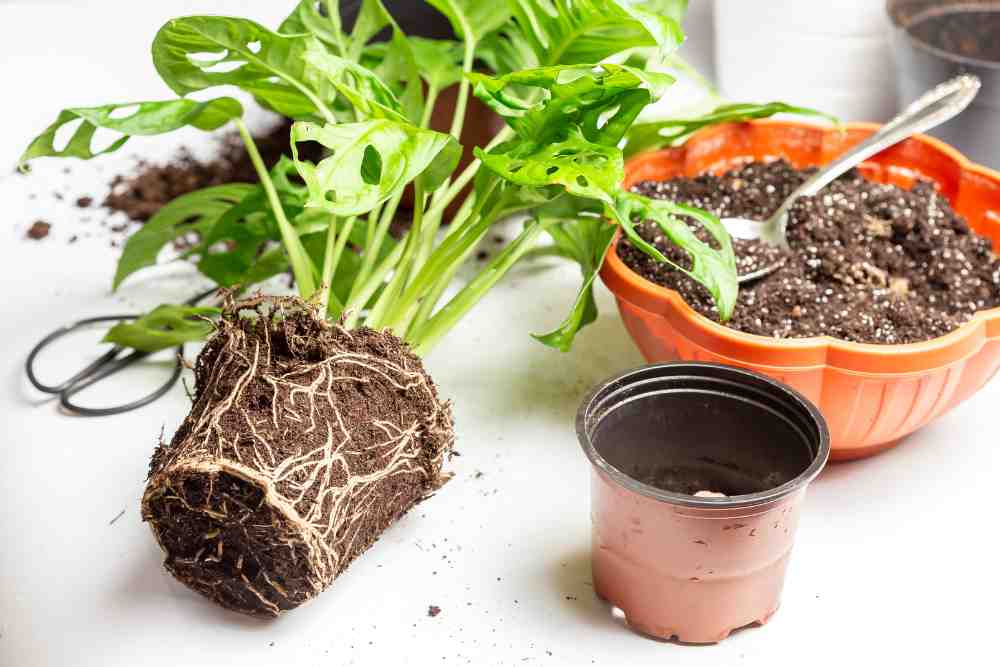
Let’s say your Monstera has grown quickly in a pot for a year. However, the container is about to break since the plant roots have started to shift into the soil. Then you know it’s time to replant your Monstera. Instead of repotting the plant, you should concentrate on figuring out what is wrong if, on the other hand, it is growing slowly or not at all. As you are moving it to a new location, you must also make sure that when you re-pot it, you put some of it in fresh soil. It would be beneficial if you also considered how you would repot your plant so that you could provide it with a healthier environment.
You must first ensure that the Monstera cutting you are using is healthy and has at least one stem before planting it directly in potting soil with good drainage. Monstera cuttings should be rooted in soil rather than water to prevent future root transplantation.
What Are The Signs Of You Plant Monstera In The Wrong Soil Mixture?
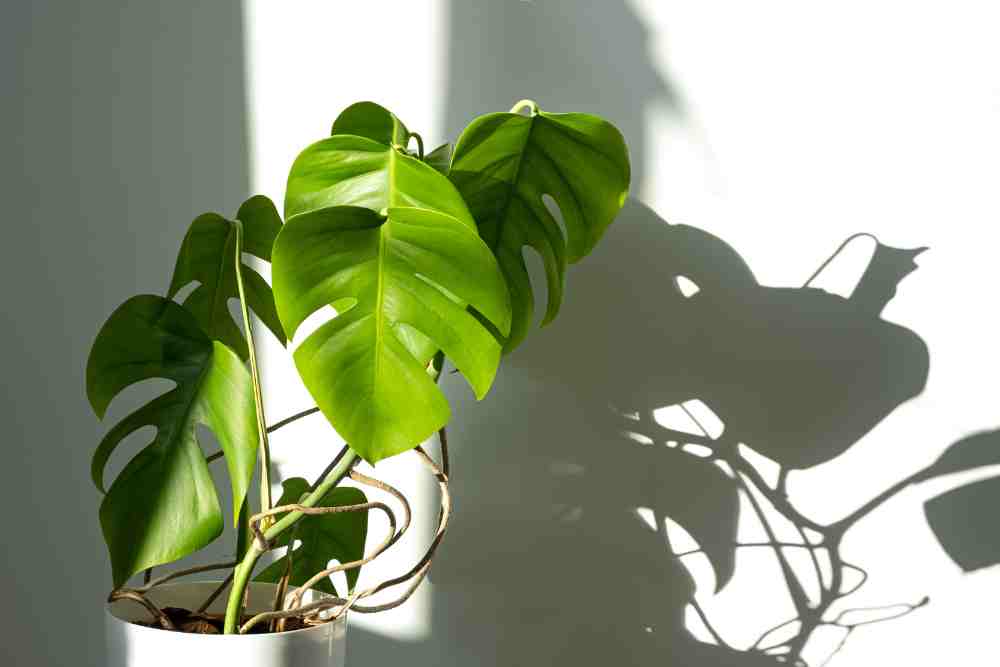
Your Monstera will let you know if you use the incorrect soil mixture. Here are a few typical indicators for which the mix you’re using must be checked.
Yellow Spots On Leaves
Monstera plants are native to the jungle and enjoy being hydrated. However, both too much and too little water can be stressful for your plant. When the leaves turn yellow, check the soil moisture from the top down with a stick or a moisture probe to determine whether it is too wet.
Sand, clay, or bark may need to be added to your soil to help the water flow through if your soil is storing too much water, preventing nutrient absorption. Check that the Monstera pot whether it drains as well.
Brown Spots
Brown spots appear on monstera plants as a result of root rot brought on by overwatering. As time passes, these patches could start off small, grow larger over time, and eventually cover the entire plant. The water you use to irrigate the soil will sit in the pot where the roots are when it is clay-type soil.
Different fungi will develop as a result of the roots being exposed to a lot of water, but the main one would be rot because it would prevent the plant’s top from receiving the proper amount of water. Due to the excessive water transportation, the vessels will sustain damage, and the plant will start to show brown spots. As standing water can cause root rot, make sure it isn’t sitting in the soil.
Drooping Foliage
A lack of water is typically the blame for your leaves drooping. However, it would help if you first examined the soil moisture because a well-hydrated plant stands up steadily. There should be a fair balance between well-draining and moisture retaining.
If the soil is too dry, add moist organic matter but avoid adding too many non-absorbent materials, such as sand and bark. If your plant looks to be drooping for a different cause than a lack of water, such as insufficient fertilizer or an imbalanced pH, carry out a soil test next.
The Wilting
Check your plants to see whether the issue is your soil combination. It would indicate that they are not receiving enough nutrients if they are wilting and the leaves feel extremely thin at the stems and throughout the foliage. You can also use a testing kit to evaluate the pH to determine whether the soil is overly alkaline.
- 29 Bucket Gardening Ideas for a Lush, Compact Garden - October 30, 2024
- 20+ Chic Boho Bedroom Ideas for a Cozy and Stylish Retreat - June 20, 2024
- 12+ Modern Boho Living Room Ideas to Create a Unique Oasis - June 10, 2024

